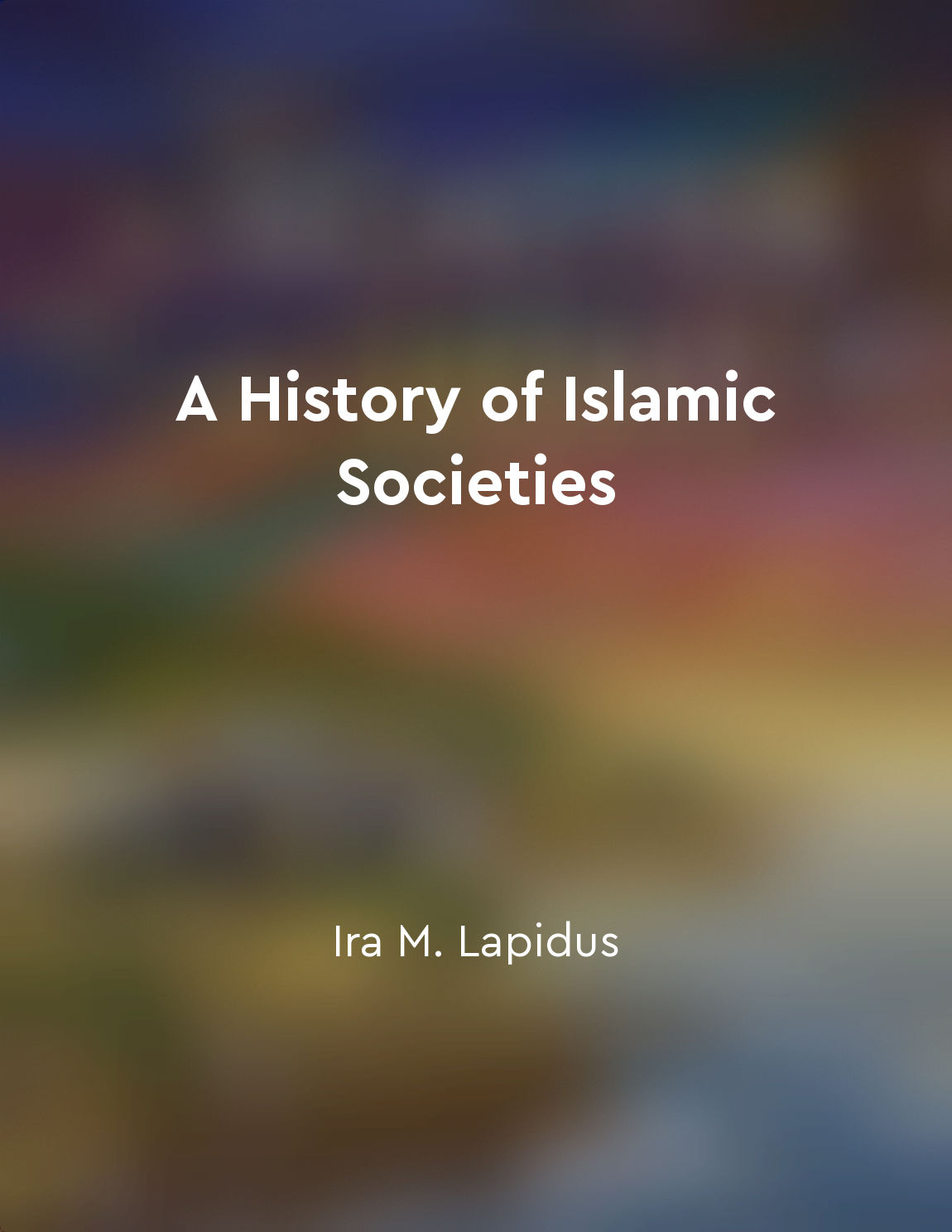The spread of Islam led to the creation of diverse societies from "summary" of A History of Islamic Societies by Ira M. Lapidus
The spread of Islam across diverse regions with distinct cultural, linguistic, and social backgrounds resulted in the creation of societies that were both influenced by Islamic teachings and retained elements of their pre-Islamic traditions. As Islam expanded into regions such as Persia, India, and North Africa, it encountered existing societies with their own unique practices and beliefs. Rather than completely erasing these pre-existing cultures, Islam incorporated and adapted to local customs, leading to the development of diverse societies that blended Islamic principles with local traditions. In Persia, for example, the spread of Islam led to the formation of a society that reflected the fusion of Persian and Islamic influences. Persian culture, with its rich history of art, literature, and governance, played a significant role in shaping the development of Islamic societies in the region. Persian scholars and administrators contributed to the spread of Islamic knowledge and governance, while Persian artistic traditions influenced the development of Islamic architecture and calligraphy. Similarly, in India, the spread of Islam resulted in the creation of a society that combined elements of Islamic teachings with local Hindu and Buddhist practices. Sufi mystics played a key role in spreading Islam in the region, emphasizing spiritual unity and tolerance among different religious communities. This syncretic approach to religion led to the development of a diverse society in which Muslims, Hindus, and Buddhists coexisted and interacted, sharing ideas and traditions. In North Africa, the spread of Islam led to the formation of societies that integrated Islamic principles with indigenous Berber and Arab cultures. The region's strategic location as a crossroads of trade and exchange facilitated the blending of diverse cultural influences, resulting in societies that were characterized by a unique mix of Islamic, Berber, and Arab traditions. This cultural synthesis gave rise to vibrant cities such as Cairo and Cordoba, which became centers of learning, trade, and artistic achievement.- The spread of Islam across different regions and societies led to the creation of diverse and dynamic societies that were shaped by a combination of Islamic teachings and local traditions. This process of cultural exchange and adaptation produced societies that were characterized by a rich tapestry of influences, reflecting the interconnected nature of the Islamic world.
Similar Posts
Ancient societies developed complex systems of governance and culture
Ancient societies, with the passage of time, evolved intricate structures of governance and culture. These systems were designe...
Military strength and conquests
The power of the Roman Empire was built upon the strength of its military might and the success of its conquests. The legions o...

Globalization has had a profound impact on Islamic societies
The global interconnectedness that characterizes the contemporary world has had far-reaching effects on Islamic societies, shap...
The caste system continues to influence social dynamics in South Asia
The caste system has been a defining feature of social organization in South Asia for centuries, shaping relationships and inte...

The Ottoman Empire played a crucial role in shaping Islamic societies
The Ottoman Empire exerted a profound influence on the development of Islamic societies over the course of several centuries. T...

